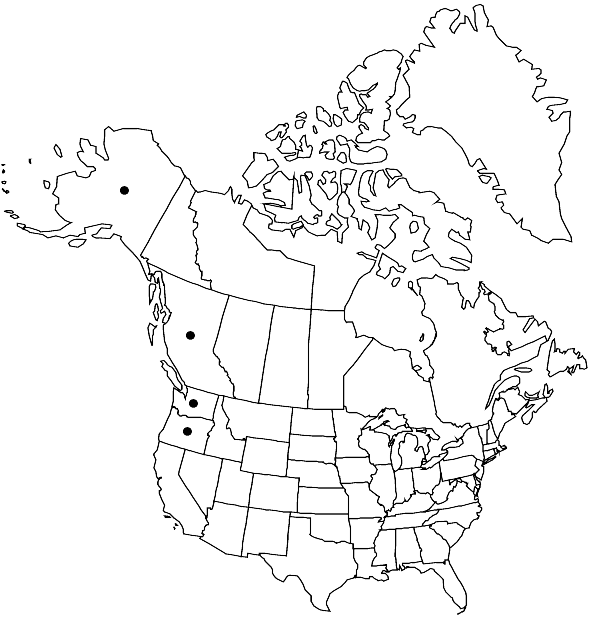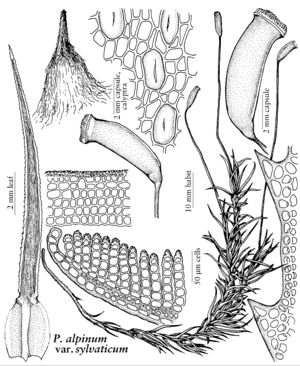Difference between revisions of "Polytrichastrum alpinum var. sylvaticum"
Sida 22: 547. 2006,.
imported>Volume Importer |
imported>Volume Importer |
||
| Line 65: | Line 65: | ||
|publication year= | |publication year= | ||
|special status= | |special status= | ||
| − | |source xml=https:// | + | |source xml=https://bitbucket.org/aafc-mbb/fna-data-curation/src/2e0870ddd59836b60bcf96646a41e87ea5a5943a/coarse_grained_fna_xml/V27/V27_149.xml |
|genus=Polytrichastrum | |genus=Polytrichastrum | ||
|species=Polytrichastrum alpinum | |species=Polytrichastrum alpinum | ||
Latest revision as of 21:24, 5 November 2020
Stems to 14 cm, simple or sparingly branched. Leaves (9–)12–14(–19) mm, coarsely toothed. Capsule 5–8 × 1.5–2.2 mm, often ± zygomorphic and widest below the middle, suberect to inclined to almost horizontal.
Habitat: Soil, moist woods
Elevation: low to moderate elevations (0–1400 m)
Distribution

B.C., Alaska, Oreg., Wash.
Discussion
Variety sylvaticum is a robust plant of the Pacific Northwest with stems to 14 cm high, sharply serrate leaves to as much as 19 mm, and large, plump, cylindric capsules, often ± zygomorphic. The type was collected by Menzies somewhere on the Northwest coast; Pogonatum macounii was collected in a ravine at 1370 m on Vancouver Island. Polytrichum alpinum var. campanulatum has large, ovoid-gibbous, almost horizontal capsules and is probably distinct, but its distribution is poorly understood.
Selected References
None.
